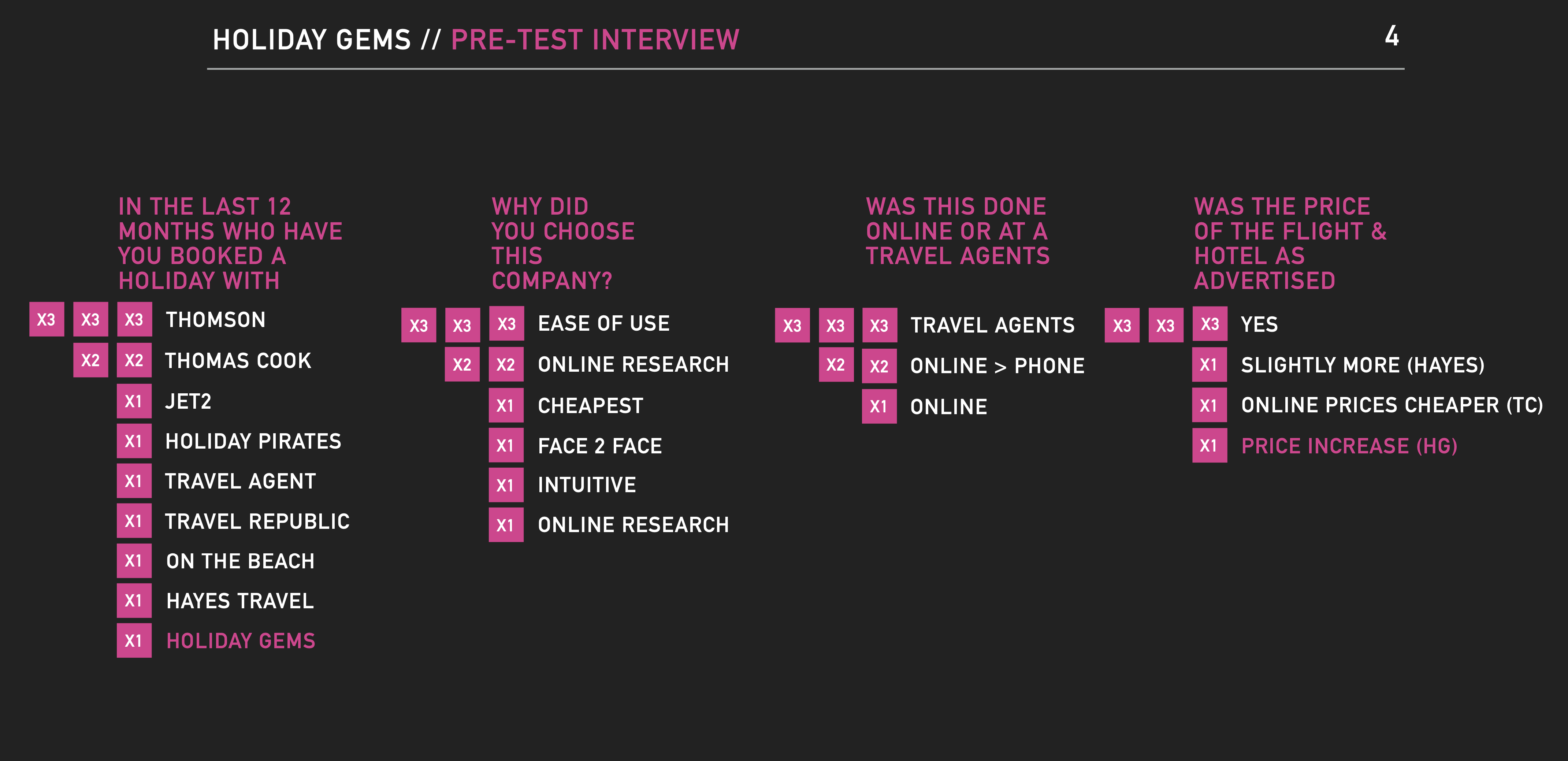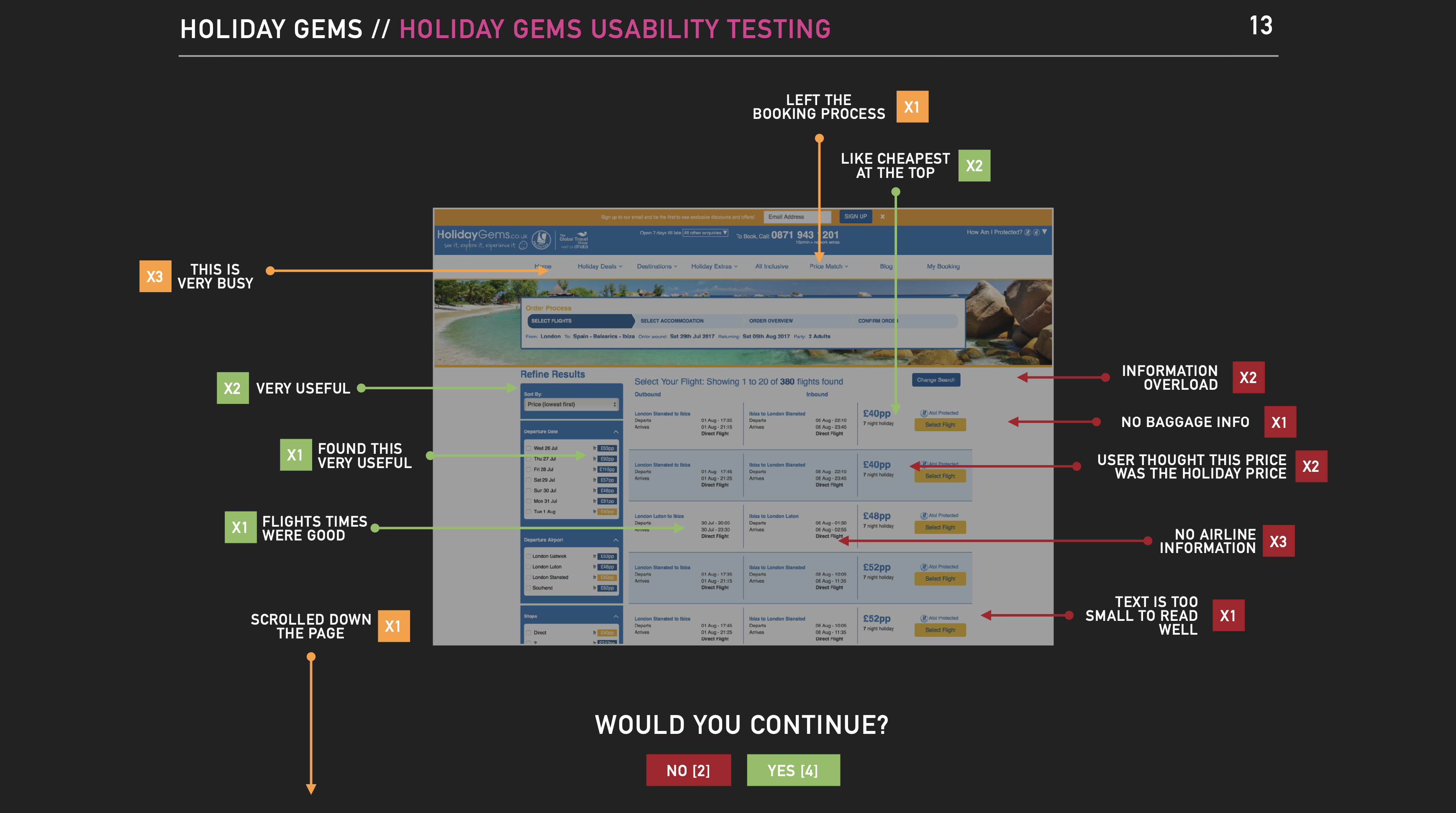
The travel industry is one of the most competitive digital markets, where small usability issues can lead to lost bookings. Holiday Gems, a low-cost holiday provider in the North West of the UK, had strong traffic from an SEO-driven strategy, but their conversion rates weren’t meeting expectations.
I was brought in to diagnose the issues and implement a structured optimisation strategy. Through user testing, eye tracking, competitor analysis, heuristic evaluations, and data analysis, I aimed to uncover where users were struggling, why they weren’t converting, and how the experience could be improved.
By personally conducting user interviews, competitor research, and stakeholder investigations, I delivered insights that led to higher conversion rates, improved accessibility compliance, enhanced usability, and a reduction in customer support inquiries.
To pinpoint why users weren’t converting, I conducted a multi-layered research process, ensuring all findings were based on real user behaviour, not assumptions.
Testing was conducted at Tecmark offices, where participants were placed in a home environment to reflect real-world conditions. A mix of new and returning users were observed across three days, covering different family structures and travel preferences.
Findings from usability testing, eye tracking, and post-interviews revealed critical issues:
To identify the root causes of low conversion, I conducted a comprehensive research and analysis process, ensuring that findings were based on real user behaviour, not assumptions.
This included:



Armed with these insights, I developed a clear strategy to improve the user experience and increase conversion rates while balancing business priorities and technical feasibility.
Navigation & Information Hierarchy
One of the biggest frustrations users faced was finding essential details like baggage allowances, airline carriers, and total package prices. To address this:
Improving Pricing Transparency & Trust
Users frequently abandoned bookings due to unexpected price increases at later stages. To rebuild trust:
Following these optimisations, Holiday Gems saw measurable improvements:
The client was highly satisfied, now equipped with clear data-driven insights on where they stood against competitors and what changes drove the biggest impact.
This project reinforced several key lessons about conversion rate optimisation and UX improvements:
If you need to optimise conversions, improve accessibility, or refine your user experience strategy, let’s chat.